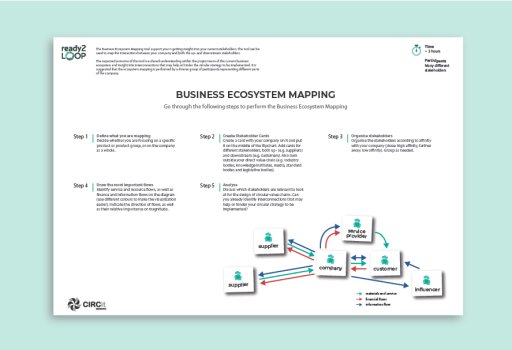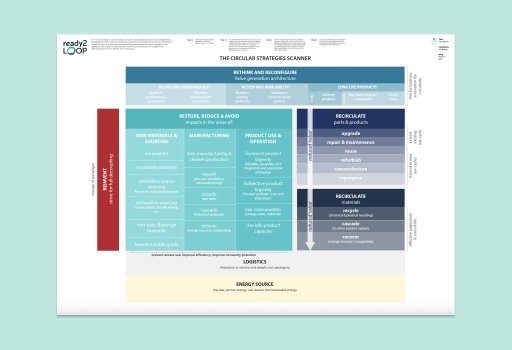Exploring the synergies between end-of-life strategies and key stakeholders in the solar heating market
“This accelerator programme gives a lot of insights into the business case for circularity and how it relates to the design for circularity. It paints a clear picture of the things that need to be changed to achieve the business case. “– Claudia Wagenfuhr Tridapalli, Sustainability Lead Engineer

Opportunity
A growing competitive market and a focus on sustainability in general within heating solutions have motivated the company to investigate its products and identify opportunities for a circular transition and the value gained by employing circular economy strategies.
Path
The 'Discover BDR Thermea Group's' Circular Economy shift, leveraging strengths in 'Use, Support & Maintenance' with a key focus on 'Product & Service Innovation' and 'Takeback & End-of-Life Strategies'. Stakeholder insights guide high-impact clusters emphasizing 'design for disassembly' and 'installers. Unveil a strategic 'circular value chain activity cycle' and transition systematically with the 'Ease of disassembly metric (eDiM)' tool.
Outcome
eDiM for solar collectors and storage tanks for Circular Economy solutions: redesigning the solar collectors with a removable EPDM seal and storage tanks with bolted flange connections. It enhances internal access, extends product life, simplifies maintenance with essential tools, and reduces repair time. Installers will appreciate the improved experience with hassle-free disassembly.
Context
BDR Thermea Group's BDU for hot water and solar solutions is embracing a transformative shift towards a circular economy, with a primary focus on solar heating. This strategic transition reflects a commitment to sustainability and innovation, aligning the company with eco-friendly practices. This supports the solar heating solution that focuses on sustainable heating of water. By reimagining product lifecycles, minimizing waste, and maximizing resource efficiency, the unit aims to pioneer a more environmentally conscious approach to business, contributing to a greener future in the realm of solar heating solutions. The company is, therefore, looking into a transition to a more circular business model; however, they are still in the early stages of understanding the potential of such a transition. The upstream processes of the company have been the main focus as well as the maintenance during the use stage, however, there has been no emphasis on the end-of-use stage and end-of-life strategies.
Opportunity
The Hot Water and Solar Solutions BDU focuses on solar solutions, which are sustainable ways of heating domestic water. This aligns well with stricter sustainability regulations being implemented in the coming years. With stricter requirements for sustainable solutions for buildings, there could be an increased demand for sustainable solutions, allowing the company to expand its market and improve its products to be sustainable in other parts of the life cycle besides supplying sustainable hot water. A few circular strategies are already employed; however, these are low in value, and the company is looking into using circular strategies with higher potential. The Circular Economy readiness of the company is currently low; nevertheless, this serves as motivation for the company to do better and become more prepared. With a focus on sustainable solutions, the competitive market is growing, opening opportunities for improved products and drawing inspiration from other solutions.
Transition path
The initial step was assessing the company's readiness for Circular Economy. This resulted in focusing on the dimensions 'Product & Service Innovation' and 'Takeback & End-of-Life Strategies'. These were estimated to create a high impact when paired with the company's strengths, which were identified to be in the 'Use, Support & Maintenance' category. The importance of stakeholders was discovered, and subsequently, the tool 'What is in it for the stakeholders?' was applied. This led to finding value missed and value opportunities regarding the company's different stakeholders. From this, several opportunity clusters were established, and by prioritizing these based on the amount of impact and ease of implementation, two clusters were found to be the most rewarding. These focused on 'design for disassembly' and 'installers', to which valuable insight was found on how these might support each other in a 'circular value chain activity cycle'. Applying a design for disassembly approach provided an opportunity to make it easier for the technicians to do maintenance.
From here, a systematic way of estimating the disassembly process of a product was explored using the 'Ease of disassembly metric (eDiM)' tool. This gave a firm overview of the strengths and weaknesses of components and their connectors. From here, research and exploration into new ways of disassembling the products were created in the same systemic way, leading to specific solutions for a transition path towards a more circular business model.
Outcome
Analyzing the transition path outcomes has pinpointed key areas for Circular Economy solutions in solar collectors and storage tanks. In the solar collector redesign, internal component access is improved by replacing glue with a removable EPDM seal, avoiding damage to the aluminum frame during repairs. For storage tanks, a crucial modification is redesigning the outer shell. The current method involves cutting the welded outer shell to access the inner tank; this can be addressed by adding bolted flange connections on the top and bottom, extending external tank use. This redesign prolongs product life and simplifies maintenance with essential tools like a spanner instead of power tools, enabling swift inner tank replacement and reducing repair time. This positive change significantly improves the experience for key stakeholders, such as installers, as easy disassembly directly impacts their interaction with the product.
Reflections
ready2Loop allowed for internal reflection on the business case and how smaller changes can improve the company’s circular economy profile. It helped the company raise questions about the status quo and whether it is the best way to do things. The company gained internal insight into the company in the process, and became clearer on how the company currently functions and what its focus should be to improve its circular economy in the future.
Next step
Run pilot projects to test different designs of solar collectors and storage tanks and their ease of maintenance and disassembly. Scaling up, a natural next step would be to expand the assessment to more units within the company to give a broader basis for a readiness assessment for circularity to focus efforts where the most significant opportunities are and where the company already has its strengths.
Micro-Accelerator. January 2024 - offered by ready2LOOP & DTU Course, Design for Circular Economy
Company
BDR Thermea








